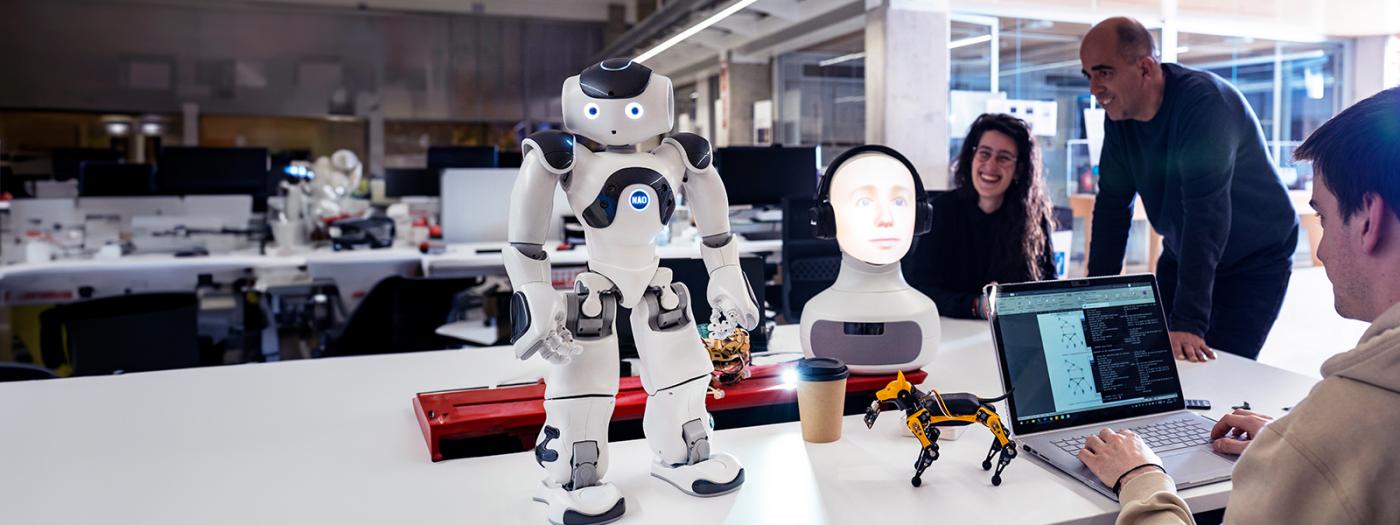Basic principles of robotics open to all students with minimal programming skills but especially those who are willing to learn. During the course will be a historical framework; we introduce in the different markets of robotics; different robots there; the different designs they have; control systems that use; different processors with whom they work; we show the different actuators and sensors with which they interact; and finally we talk about artificial intelligence.
Besides, the course consists of a practical part with some newspapers deliverables that must be submitted compulsorily.
Titular Professors
Any.
Students who study the subject acquire the knowledge and develop the skills listed below:
1. Have a basic general knowledge of robotics.
2. Have knowledge of robotic platforms most commonly used in the market.
3. Use the techniques and new software tools for the design of robotic systems.
4. Identify and have the ability to apply knowledge to practice, design problems and simulation of robotic systems.
THEORETICAL PART
1. Basics
1.1.- Sense, Process, Acting
1.2.- The robot and the environment
2. Historical background.
3. Market Robotics.
4. Types of Robots
5. Design of robotic systems.
5.1.- Oriented vs bio-inspired features
6. Control in mechanical systems: Stability vs. Degrees of freedom
7. Introduction to processors for robots
7.1 Types
7.2 Arduino
7.3 Raspberry Pi
7.4 Introduction to ROS
7.5 Other (FPGAs, etc.)
8. Introduction to actuators
8.1 Motors
8.2 Other actuators (LEDs, speakers, etc.)
9. Introduction to sensors
10. Introduction to control systems
11. Introduction to intelligence and control artificial intelligence
PRACTICAL PART
1. LabVIEW Programming
2. Introduction to platforms like LEGO NXT/EV3, Arduino and Raspberry
The methodology used in this course is based on lectures, practical classes, and especially where it is intended that the student actively participate.
During the lectures, the theoretical content of the subject is explained and discussed concerns about this content are resolved.
Every 3-4 weeks small projects that must be solved in group with LEGO NXT robot / EV3 mainly proposed.
Also, within these classes they are devoted to some problems and propose that students solve them in situ, and discussions are proposed for everyone to show their view on those issues that have most controversial robotics.
[A] Projects smalls exercises applying the concepts received in class.
[B] Final Project.
[C] Individual Rating evaluating theory and discussions.
[D] Intra-group evaluation during group projects.
The final grade is calculated by applying the following weighs:
Projects: 60%
Final Project: 20%
Individual Rating: 10%
Intra-group evaluation: 10%ther [A, D]
Provided by the teacher.
